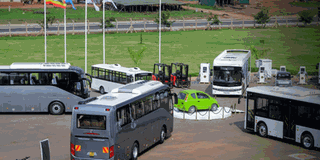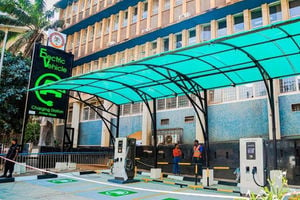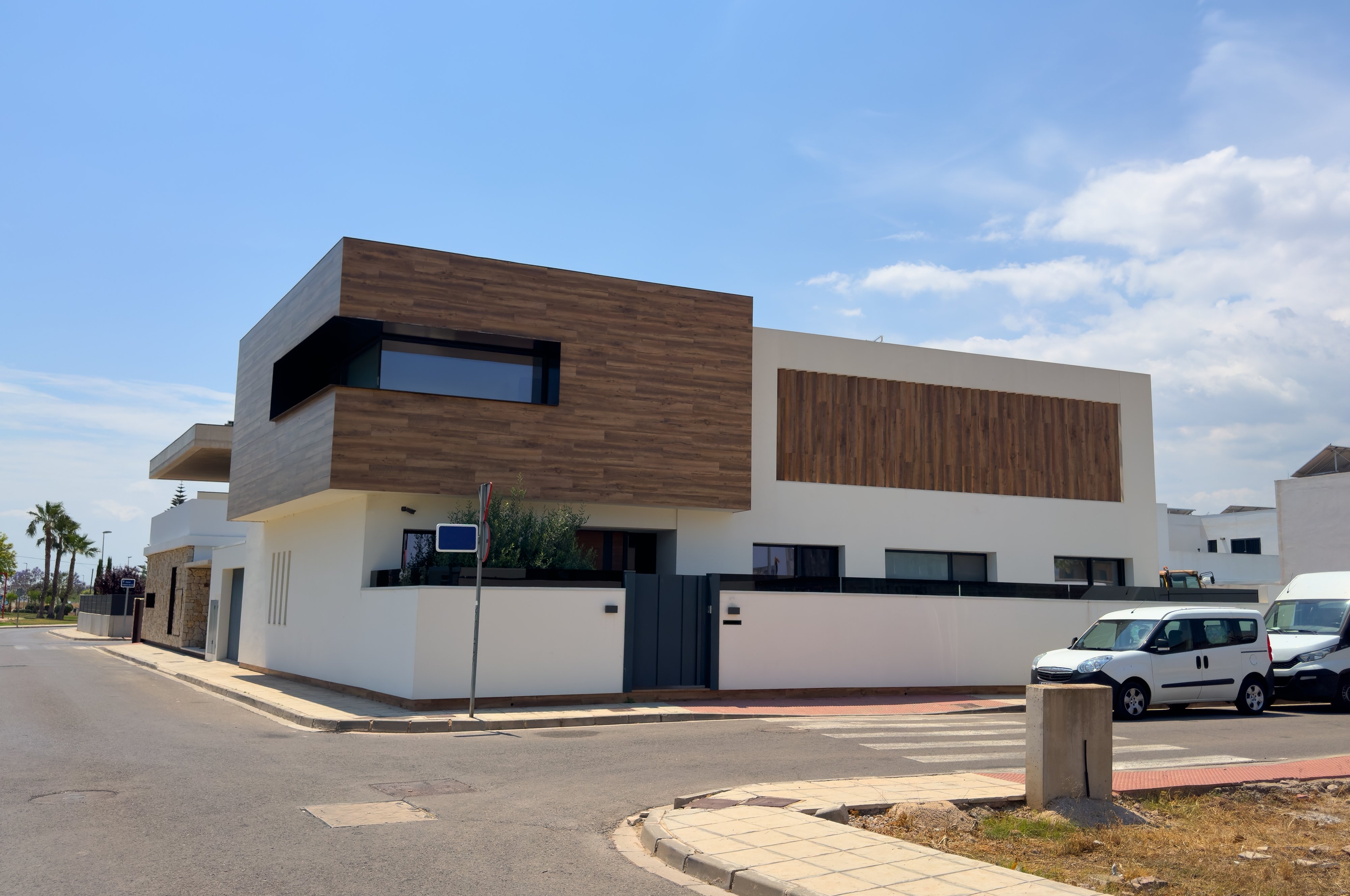
Kiira electric vehicles at the Kiira Motors plant in Jinja. A tax hike from 0 percent to 25 percent on EV imports reduced their imports from 420 to 26 units this fiscal year, according to Uganda Revenue Authority.PHOTO/COURTESY
Uganda has eagerly awaited large-scale production from its state-owned auto plant, which some peg to be a high financial risk before it breaks even.
Kiira Motors Corporation’s executives intend to produce 5,000 vehicles annually, mostly buses, to advance sustainable mass transit options for the continent that also reduce greenhouse emissions from its large plant situated on 100 acres of land in Jinja.
High-stakes gamble?
So far, company records show that it has sunk in Shs335 billion from the government between 2018 and 2023.
This started as an idea at Makerere University, where a team including the current chief executive officer Paul Musasizi, who were students then, built the first Kiira electric vehicle (EV) in 2011.
Their perseverance convinced the Cabinet to turn their vision into a state-owned enterprise. Currently, Kiira Motors, with the National Enterprise Corporation, has produced 39 vehicles from Nakasongola. By October 2024, the Jinja plant is expected to roll out 2,500 buses annually.
Seizing market
Uganda’s car imports surged to Shs2.94 trillion in 2022/23, up from Shs407 billion in 1996, something that the automaker wants to leverage on and offset through mass transit units.
The Transport Ministry’s research shows that 82 percent of Ugandan road passengers rely on public transport.
“For someone looking to have interventions, the starting point should be on the passenger side in public transport means, and that’s where the buses come in,” Mr Musasizi explained to Prosper Magazine.
“But also buses offer another opportunity because they can easily be produced at low volume. Producing private cars requires high volumes to be viable,” he added.
The global electric vehicle market has surged tremendously, with experts predicting continued growth.
In 2023, 14 million new electric cars hit the roads, a 35 percent increase, the International Energy Agency data shows. This also brought on slashed prices by the big Electric Vehicle (EV) makers such as Tesla and Ford which was attributed to high prices, limited charging, and tax credit issues.
Most EVs currently on sale in Uganda are on the more expensive side of the automotive market between $50,000 (Shs184.8 million) and $60,000 (Shs221.8 million) as Prosper Magazine observes.
Motorcare has imported more than 21 units since 2022 and has sold 15 as of August. Together with other car importers, it has however been slapped with soaring import taxes that hamper their sales.
A tax hike from 0 percent to 25 percent on EV imports reduced their imports from 420 to 26 units this fiscal year, according to Uganda Revenue Authority.
Eventually, they have priced their vehicles highly. Unfortunately for the consumers, the electric car repair costs and insurance costs can be higher in some places because of a shortage of mechanics.
This is coupled with limited charging infrastructure, with wealthier buyers better positioned to install home chargers.
Charging at home costs about Shs37,000, but efforts are underway by the Energy Ministry to expand this infrastructure.
Currently, there are just three fast chargers up but Kiira Motors has procured nine more to be set up before the year closes. For them to be scaled up, they needs “very high investments.”
Elon Musk, the owner of Tesla, the largest electric car maker in the world acknowledged these difficulties early this year, telling investors: “The EV adoption rate globally is under pressure, and a lot of other auto manufacturers are pulling back on EVs and pursuing plug-in hybrids instead.”
Kiira Motors is highly banking on the government to avert this “because it’s a major consumer of mobility solutions and business-to-business solutions like people who own fleets. As we scale and get more market dominance, the business-to-consumer will continue being a very important segment,” Mr Musasizi said.
So far, the automaker has received orders of about 100 electric buses booked by consumers from several African countries such as Tanzania, South Africa and Eswatini.
Investment
While achieving annual mass production is challenging, the company believes that if other African nations join forces and divide themselves into specialties such as infrastructure development, component production, and sourcing of minerals, this business could get easier.
“Our immediate need is Shs500 billion that will bring the company to running capital because the rest of the money was sunk into the facility. We need to ramp up our manufacturing stock and have at least 200 buses at any one time and in variety,” said Monica Musenero, Uganda’s Science, Technology and Innovation minister.
This ministry prioritises e-mobility and says there is a hefty need for $500 million (Shs1.8 trillion) to materialise an ecosystem for research and development, production and market systems in the medium term.
To date, the government and venture capitalists, have invested up to $140 million in this regard.
Kiira Motors needs another $2 billion (Shs7.4 trillion) for building an e-mobility park in Kayunga on two square miles of land. There, the country hopes to establish manufacturers of auto parts to allow production of up to 150,000 vehicles annually.
The automaker’s ambitious drive is highly capital-intensive and requires supportive financial institutions who view its eco-system as a viable investment rather than a risky venture.
Uganda Development Bank has made strides in this regard although its focus has mainly been on two-wheelers, leaving the broader electric vehicle manufacturing sector’s ecosystem that includes automakers, battery manufacturers, energy providers, component manufacturers and raw material suppliers, underfunded.
Esther Ndeti, a Kenyan principal investor at Unconventional Capital, notes that venture capitalists seek out high-revenue potential companies that don’t want to dilute their equity.
"We look for businesses with strong revenue cycles that align with revenue-based financing, which is more akin to working capital than traditional debt," she explains.
Currently, she says, 50 to 60 e-mobility businesses in Africa have attracted around $150 million (Shs554.5 billion) in venture capital investments.
Kiira Motors faces a precarious future if investors like Unconventional Capital are not convinced to provide it with the necessary funding.
Market
Arthur Mukembo, a venture builder and innovation expert, emphasizes that for Kiira Motors to succeed, it must focus on producing top-tier products.
"Kiira Motors needs to produce the best to succeed, similar to what Tesla and other mobility sector leaders like Turkey, South Africa and Uzbekistan are doing," Mukembo explains.
"Excellence in product quality is not just something you tell people about; it is demonstrated through how all elements of production come together. That’s what will help market the product itself," he adds.
Mr Mukembo stresses that the company needs to prioritize domestic consumption for it to comfortably lure international markets.
"The immediate opportunity is producing 2,500 to 5,000 vehicles annually. This scale of production would likely require 2,000 to 3,000 people involved in the production value chain. This value chain can have a billion-shilling economic multiplier effect," he says.
Additionally, he sees the African Continental Free Trade Area (ACFTA) as an opportunity for Kiira Motors.
"ACFTA is a $3 trillion market that is expanding daily. If Uganda doesn’t compete with these high-value manufactured products, we shall miss out," Mukembo notes.
A lifeline?
The government, which the company heavily depends on, is currently grappling with financial constraints that hinder its ability to provide adequate support. Experts propose that tapping into the burgeoning carbon credits market—potentially worth billions—could serve as a crucial lifeline for the company.
Automakers reducing emissions earn carbon credits, which they can sell to high-emission companies.
Kiira Motors could generate carbon credits by manufacturing electric vehicles, and selling them to high-emission industries.
But the country lacks robust policies to support carbon market participation with little progress in the National Assembly. The carbon market is currently fragmented and dominated by small-scale projects.
However, the Ministry of Energy aims at “diversifying and scaling up the carbon trade project portfolio” through the Climate Finance Unit by developing national policies, regulations, and guidelines.
It plans to build validation and verification capacity for these carbon credits, according to Irene Bateebe, the permanent secretary of the Energy Ministry.


